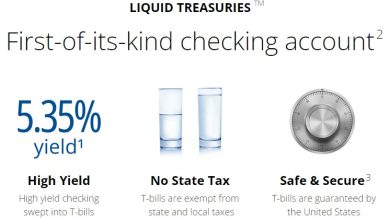What is the Average Household Budget?

How much of my monthly budget should I be spending on food? Am I eating out too much?
What about rent? Am I spending too much on rent or maybe utilities?
These are all difficult questions. It’s hard to know if we’re spending too much or too little unless we’re constantly in the red, but that’s hardly the best approach.

For many of these questions, we often rely on rules of thumb. But rules of thumb are funny.
Some make sense, others don’t. And most can’t be “confirmed” or “proven” in any meaningful way.
That said, rules of thumb are really guidelines (but guidelines of thumb sounds even sillier). With so many situations and scenarios, it’s impossible to believe there exists a rule that works in all cases.
One budgeting rule of thumb is that you should limit your housing expenses (total of your mortgage/rent plus utilities) to 30% of your take-home income. That’s a solid rule of thumb that I include in my post about important money ratios to remember.
While your specific situation will have a huge influence on how much you spend in any budget category, it’s good to have guidelines as a sanity check.
But absent any rules of thumb for spending, how much should you be spending on various items?
While we can’t build a rule for everyone, reviewing how the average American spends their money can be very useful.
Table of Contents
🔃 Updated May 2024 with the latest data from the Bureau of Labor Statistics – this time the data comes from their Consumer Expenditure Survey from 2022. (this is the latest data available as of May 2024)
Average “Expenditures”
The best data set for this type of information is the Bureau of Labor Statistics’ 2022 Consumer Expenditure Survey.
The BLS collects this type of data through the use of surveys and it’s one of the most comprehensive surveys on consumer spending and income. You can read their overview for the methodology. If you look at the spreadsheets, there is a tremendous amount of granular detail. For our purposes, we’ll be looking at the most general figures.
Here are the expenditures of all consumer units in 2022:
- Food: $9,336.70. They break this down into Food at home ($5,699.50) and Food away from home ($3,637.20).
- Alcoholic beverages: $582.90
- Housing: $24,297.20
- Apparel and services: $1,943.50
- Transportation: $12,294.80 (of which gasoline and fuel accounts for $3,119.70)
- Healthcare: $5,850.30
- Entertainment: $3,457.60
- Personal care products and services: $866
- Reading: $116.70
- Education: $1,335.40
- Tobacco products and smoking supplies: $371.30
- Miscellaneous: $1,008.50
- Cash contributions: $2,754.70
- Personal insurance and pensions: $8,742.00
If you were to add up all the spending (which includes items I didn’t list above), the total expenditure is $72,957.40.
It’s important to note that this is the average for all households. This includes single-person households to multi-children families. It also includes households across the country from areas with significantly different costs of living.
We recognize the limitations of using such a general number so I would focus less on the specific number and more on the relationships.
Individual Budget Categories & Percentages
To that end, let’s see how much people spend on what as a percentage of their total spending budget and of their income.
Many of the personal expenditure categories match up with what regular folks put as budget categories in their budget spreadsheets or apps.
Food is food, housing is rent or your mortgage, etc. Here are those categories, with their calculated percentage of your total budget as well as the percentage of income before taxes. Utilities is specifically mentioned, but here is info about the average utility bill. (if you’re overspending here, try these ways to lower your electricity bill)
For this table, the total expenditure is $72,957.40 and total income before taxes is $94,003.
| Category | Amount | % of Spending | % of Income |
|---|---|---|---|
| Food | $9,336.70 | 12.80% | 9.93% |
| – Food at home | $5,699.50 | 7.81% | 6.06% |
| – Food away from home | $3,637.20 | 4.99% | 3.87% |
| Housing | $24,297.20 | 33.3% | 25.85% |
| – Shelter | $14,506.90 | 19.88% | 15.43% |
| Apparel & services | $1,943.50 | 2.66% | 2.07% |
| Transportation | $12,294.8 | 16.85% | 13.08% |
| – Vehicle Purchase (net outlay) |
$4,495.90 | 6.16% | 4.78% |
| – Fuel (Gas) | $3,119.70 | 4.28% | 3.32% |
| Healthcare | $5,850.30 | 8..02% | 6.22% |
| – Health insurance | $3,843.20 | 5.27% | 4.09% |
| Entertainment | $3,457.60 | 5.74% | 3.68% |
| Personal care | $866 | 1.19% | 0.92% |
| Education | $1,335.40 | 1.83% | 1.42% |
| Cash contributions | $2,754.70 | 3.78% | 2.93% |
| Personal insurance | $8,742 | 11.98% | 9.3% |
| Pensions, Social Security | $8,222.80 | 11.27% | 8.75% |
| Miscellaneous | $1,008.50 | 1.38% | 1.07% |
Also, here is a glossary of BLS vocabulary. I had to look up what a bunch of different items meant, like cash contributions. Those are payments to persons or organizations and includes things like alimony as well as charitable contributions.
I calculated both columns because I wanted to but it’s the last column that I really want to pay attention to. I chose to calculate it as a percentage of income before taxes because most of think of our income as our “salary.” It’s not what we take home.
I also chose before taxes because it’s a little cleaner of a calculation. Everyone’s tax situation is different and you could have more tax deductions, etc, but it’s all roughly similar at similar incomes. If it’s a big issue for you, it’s a simple adjustment.
Here are the major budget categories and percentages of income:
- Food: 9.93%
- Housing: 25.85%
- Transportation: 13.08%
- Healthcare: 6.22%
- Personal Insurance: 9.3%
- Retirement (pensions, SS): 8.75%
When you compare them with expenditures in 2017, the last time I updated this post, the figures aren’t too different. All the numbers are larger but percentage-wise, they’re all pretty close.
Key Takeaways
Here were some key takeaways I found interesting.
Food is 10%
We all need food to survive and it was interesting to see that the average American spent 10% on food with an even split between going out and cooking at home. The BLS’ summary data table didn’t include one breakout item, which was $582 per year on alcoholic beverages. That one was in the bigger Excel tables if you care to download them. I suspect (OK, I’m certain) we spent more than $582 on alcoholic beverages annually and that may highlight the risks of leaning too heavily on population data like this one!
I was surprised the spend on food was so close to even between cooking at home and going out. That said, I think our budget is similar though the number of meals cooked at home vastly outnumbers the number eat out (all breakfasts and most lunches and dinners are at home). Still, it’s surprising.
Housing is 30%
This all started with the idea that a key money ratio was keeping housing costs below 30%. We saw that the average spent on housing was $24,297.20, or 25.85% of the average income before taxes.
Obviously, the less you pay (within reason), the better. But 30% as a benchmark is not unreasonable if you are in a typical situation. This is affected a bit by those who live at home (and pay no rent) and those who live in a very high cost of living areas with a relatively low-income job, but the average of the population seems to make the 30% rule an attainable one.
The next two pieces of that 30-20-50 money ratio are that you should save at least 20% of your income (or use it to pay down debt)and reserve the remaining 50% for other expenses. (interestingly enough, those who which to retire early and financially independent often seek to save 50%+ of their income)
You can play with those numbers but limiting your housing to 30% means the other numbers are bigger.
But the challenge is that you can’t always control your housing costs. The Pew Charitable Trusts analyzed the Bureau of Labor Statistics Consumer Expenditure Survey (we use the same data) and saw that lower-income households spent more, as a percentage of income, than middle and top incomes. Lower-income households spent 40%, compared to 25% for middle and 17% for the top.
It’s hard to get ahead when you’re spending 40% just on where you live.
Transportation – 13%
For many Americans, owning a car is almost part of the American dream. The freedom of movement is incredible and it’s one of the best ways you can invest in yourself as you move up the economic ladder. Not having to rely on public transportation, especially in non-urban environments, can save you a ton of time.
I was, however, surprised that this typically consumes 13% of one’s income. That strikes me as a large number. Much of it goes towards the auto loan, which is something folks carry for 3-5 years, and it correlates with the advice that you should be driving a car as long as possible.
After the purchase, much of the rest is on fuel and maintenance. The average household spends $3,119.70 a year on gasoline.
If you keep buying new cares, you’re paying 5% of your income every year and that’s like carrying another mortgage. On a depreciating asset.
“Retirement” of 8.75%
I called this category retirement but it covers pensions, and I assume defined contribution plans like 401(k), and Social Security, which is mandatory for W2 income at 6.2%.
If you take everything at face value, that means people are only contributing ~2% towards pensions. This kind of matches up a little with the overall savings rate, tracked by the St. Louis Federal Reserve. The savings rate for March 2024 was 3.2%.
The only thing we can say about that is 2% towards retirement is often the bare minimum. That’s not nearly enough.
Personal insurance of 9.3%
Personal insurance covers any insurance of the person besides health insurance. This includes life insurance, mortgage guarantee insurance, personal liability, umbrella, accident, and disability. It doesn’t include insurance on home or auto.
9.3% of income on premiums seems like a very high number considering it excludes two of our biggest insurance line items – homeowners and auto insurance.
I’m sure there are more interesting statistics to keep an eye on but these were the ones that jumped out at me.
What do you think? Does anything surprise you?
Other Posts You May Enjoy:
How to Organize Bills: 8 Helpful Tips
Having a plan to organize your bills can help you stay on track with your budget and make managing your money more seamless. Learn more.
Are No-Penalty Add-On CDs the Future?
Navy Federal Credit Union has a no-penalty add-on CD, which are two CD features I’ve never seen combined before. Banking products are becoming increasingly flexible and I discuss why I think that is.
State-by-State Home Energy Rebates from Inflation Reduction Act
The Inflation Reduction Act included two provisions that offered tax rebates and credits for energy efficient home improvements. We take a look at those provisions and how states will implement them.
Don’t personally identify with your investments
Tribes are great when it comes to sports. It’s fun to cheer for something and wear its gear. It becomes dangerous when this tribalism extends into the realm of investing.

About Jim Wang
Jim Wang is a forty-something father of four who is a frequent contributor to Forbes and Vanguard’s Blog. He has also been fortunate to have appeared in the New York Times, Baltimore Sun, Entrepreneur, and Marketplace Money.
Jim has a B.S. in Computer Science and Economics from Carnegie Mellon University, an M.S. in Information Technology – Software Engineering from Carnegie Mellon University, as well as a Masters in Business Administration from Johns Hopkins University. His approach to personal finance is that of an engineer, breaking down complex subjects into bite-sized easily understood concepts that you can use in your daily life.
One of his favorite tools (here’s my treasure chest of tools,, everything I use) is Empower Personal Dashboard, which enables him to manage his finances in just 15-minutes each month. They also offer financial planning, such as a Retirement Planning Tool that can tell you if you’re on track to retire when you want. It’s free.
Opinions expressed here are the author’s alone, not those of any bank or financial institution. This content has not been reviewed, approved or otherwise endorsed by any of these entities.




